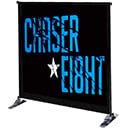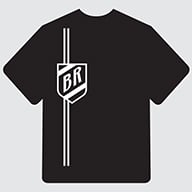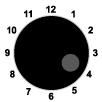
When it comes to finances and figuring our rates, musicians usually have a lot of questions. One question is, how much should you charge for your music?
We’re going to tackle that question, providing a clear and practical way to figure out your rates as a musician.
How Musicians Make Money Nowadays
Music fans are just about over buying CDs as most people just stream music on Spotify or Apple Music, but the per-stream payout is pretty low. Unless you’re getting millions of plays, streaming is mainly to make sure your name and music are everywhere.
There is a decent-sized subculture centered around vinyl records, but, as of this writing, it’s not mainstream. Plus, pressing your music to vinyl is very expensive.
And even though there are plenty of ways to make money as a musician, like sync licensing and fan patronage, the main way most musicians make money is by playing shows. A lot of artists make a big chunk of their money from merch sales, which mostly happen at shows.
So that leads us to the question, “How much should I charge for my shows?”
Questions To Ask Yourself
Inevitably, that question of how much to charge for playing a gig leads to more questions.
What’s the venue? What type of gig is it? Is it a private or public event? Is it for a charity or nonprofit? Have any of your musician friends played this gig before? If so, what did they charge?
These are all good and necessary questions, but really the one you should start with is, “How much do I want to be making per year?” From there, you can break it all down and get a better picture of how much to charge for each show.
So let’s break it down.
How To Figure Out Your Rates
If you’re looking to make (or continue making) music your career, you’ll need to know what your rates are. Maybe you already have rates. But maybe you can adjust your rates (and make more money).
Here’s a step-by-step guide for figuring out your rates (thanks in large part to performer Chris Holder):
- What do you want your gross annual income to be?
- Add about 30% for music expenses
- Add enough to cover any insurances you want
- Add enough for sick/vacation days
- Add the amount you want to contribute to your retirement account for the year
- Add another 5% to be invested back into your music
- Add about 20% to set aside for taxes
- Divide whatever number you end up with by the number of days you plan to work this year (remember that you’ll have some office days where you don’t directly earn anything)
And there you have it. After step #8, you should know the amount of money you need to make each week and each day. So if you play two shows a week, those two shows will need to make enough money for the week (assuming your only income is from gigs).
Finding The Right Venues
The next step is to figure out what kind of venues you want to perform in. And that leads us to more questions.
In what context do you thrive onstage? What types of venues do the most people show up to? Who can afford to pay you your rates?
These questions lead to answers and answers lead to solutions and solutions lead to you making money as a musician.
– – – –
Caleb J. Murphy is a songwriter and producer based in Austin, TX. He’s also the founder of Musician With A Day Job, a blog that helps part-time musicians succeed.





































